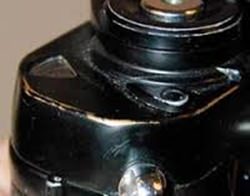A good camera is an expensive investment. However, like many expensive purchases you can save a bundle if you look at second hand, rather than brand new. But is it worth it with photographic gear? I say yes!
In my career with a professional studio, I have in my time bought many expensive cameras, Hasselblads, Nikons, Canons and Cambo’s. The ‘Blads alone were worth several thousands of dollars, but other than one camera purchased for me overseas, the rest of them were second hand!

In fact, after a disastrous robbery in Pattaya where I lost three Nikons, I replaced my Nikons with more second hand ones. No, I did not go to the pawn shops, I went to the large photo dealers in MBK in Bangkok. With no worries either!
So here’s what to do if you decide you want to upgrade or replace. Like buying anything, one of the biggest problems is not ascertaining the condition, it is just making sure that you do not need asbestos gloves to handle the merchandise. In other words, make sure it isn’t “hot”. (In particular, one of my stolen cameras!)
If you are buying from a recognized camera shop then you are probably OK, such as the MBK ones, but from Shady Sam’s Secondhand Store, it is caveat emptor – let the buyer beware. If you are buying from a private owner this is more difficult, as you need to look for some proof of ownership – a receipt from their initial purchase, or at worst, some insurance documentation. Most robbers don’t bother insuring the loot!
Now let’s go through what you have to do to make sure you have bought a good secondhand one – and we’ll deal with the camera body first. Just like looking at a second hand car, how many bumps and scrapes are there on the case? Turn it over and look at the top, front, back, sides and bottom. Look particularly for small dents in the case. With good cameras you have to use a lot of force to actually dent the casing, so it probably means the camera has been dropped. You do not want a dropped camera – they are more trouble than they are worth, no matter how cheaply it is being offered. Cheapness might also mean damaged goods!
Note “wear” marks on the edges of the body. Nice smooth wear areas generally mean the camera spent most of its life in a camera case. In other words, it has had half a chance of being looked after properly, though camera cases are becoming rare these days.
Now look at the lens(es). Do they operate smoothly? No ‘gritty’ feeling when rotating the focusing ring? Any marks on the outside of them? Now look at the lens, dismounted from the camera. Check the bayonet or screw fitting and hold the lens up to the light. Look for “spider web” traces on the glass elements which may mean fungus. This does not mean the lens is ruined – it just means it will need a service soon. Now look through the lens while closing the aperture down and make sure it closes OK.
Now remove the lens and look inside. If possible, look particularly at the shutter. Titanium shutters as used in Nikons are very fragile and should be completely flat. Look for corrosion around the light seal edges of the camera with the lens mounting and the grooves it fits into on the body. This may be a sign of water damage.
Look into the body at the front and make sure the mirror is clean and works properly when the shutter is depressed.
You have only one more check to do. Use the camera to check all the shutter speeds, apertures and functions, and there can be many. With a private seller, I always grill the person on just why he or she wants to sell the camera, before money actually changes hands. With a camera shop, you will have to rely on their guarantee – usually one month. Again, discuss this with the shop first! Lots of luck – if you have checked everything, you will probably have saved yourself 50 percent of the new price.




